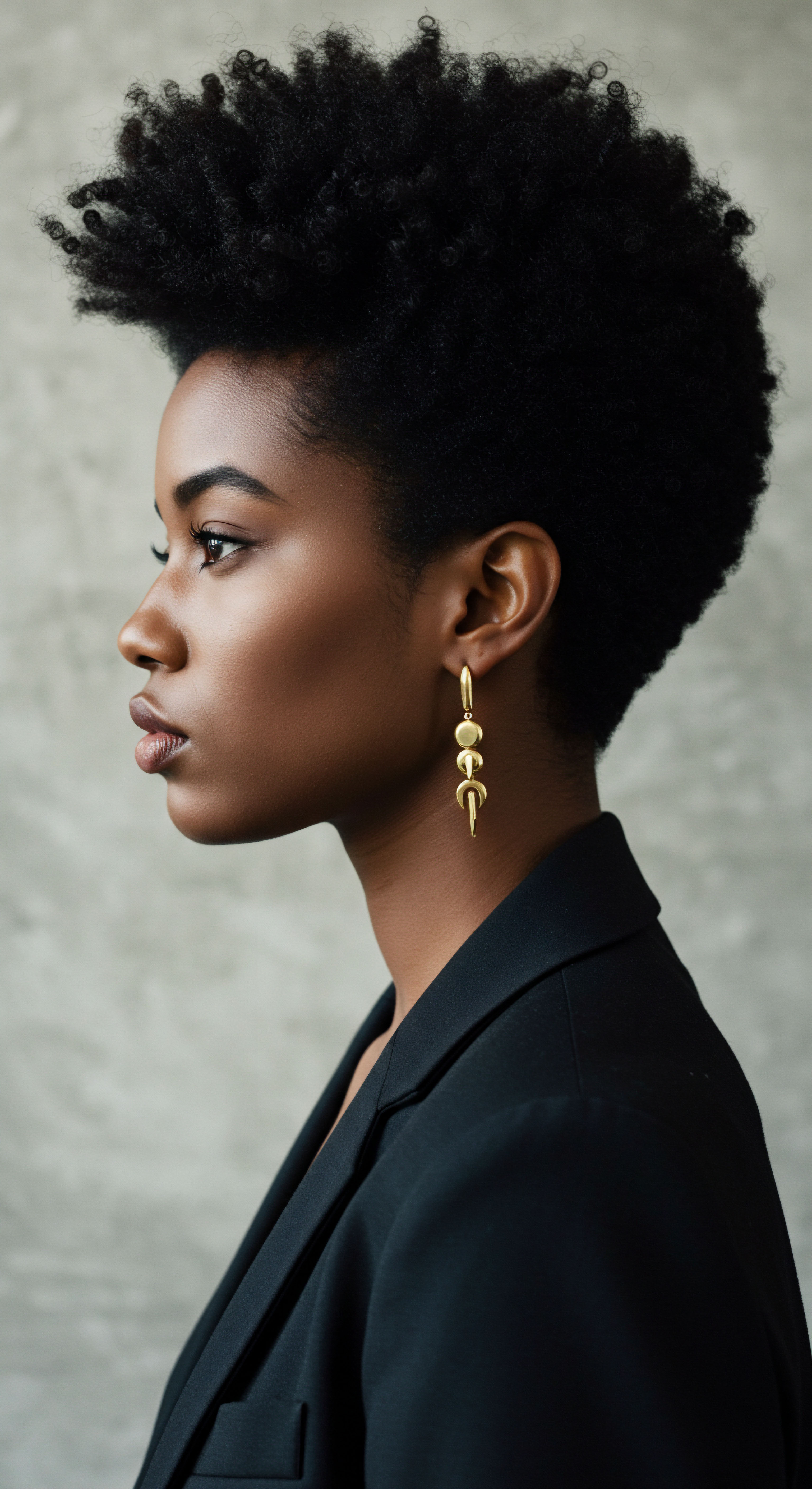
Roots
A quiet inquiry stirs within us when we consider the enduring societal discomfort with natural Black hairstyles. It is a curiosity that moves beyond simple fashion or personal taste, reaching instead into the deep currents of human perception and historical conditioning. Why, when confronted with the intrinsic curl, the rich coil, or the magnificent fullness of textured hair, has society often recoiled, labeling it as less than, unprofessional, or even unruly?
To truly understand this persistent bias, we must journey back to the very origins of perception, to the foundational elements that shaped our collective gaze and, in doing so, laid the groundwork for prejudice against a crown so inherently beautiful. This exploration begins with the very essence of hair itself—its biology, its cultural significance across time, and the deliberate dismantling of that meaning.
The anatomy of textured hair presents distinct characteristics that differentiate it from other hair types. Each strand of hair emerges from a follicle, and the shape of this follicle largely dictates the hair’s curl pattern. For tightly coiled or curled hair, the follicles are often elliptical or flattened, causing the hair shaft to grow in a helical or spring-like fashion.
This structural difference means that natural oils, produced by the scalp, struggle to travel down the spiraling strand, leading to a predisposition for dryness. The cuticle layers, which shield the hair, are also often more open in textured hair, making it more susceptible to moisture loss and environmental influences.
Beyond its biological specificities, hair held immense cultural importance in pre-colonial African societies. Hairstyles were never merely aesthetic choices; they served as profound visual markers. They conveyed social status, marital standing, age, tribal affiliation, wealth, and even religious beliefs. A person’s hair could narrate their life story, their community’s history, and their place within it.
These intricate designs were often communal acts, requiring hours of patient work, fostering connection and shared wisdom. The act of styling hair was a ritual, a moment of intergenerational teaching and cultural affirmation.
The intrinsic structure of textured hair, often predisposed to dryness and open cuticles, is a biological reality that has been historically misconstrued and devalued.
The arrival of the transatlantic slave trade violently disrupted these deep-seated cultural connections. Enslaved Africans were stripped of their names, languages, spiritual practices, and, significantly, their hair rituals and traditional styles. The brutal conditions of the journey and forced labor made intricate hair care impossible.
Slaveholders often mandated that enslaved people shave their heads or cover their hair, a deliberate act of dehumanization meant to sever ties to their heritage and diminish their sense of self. This was not a mere oversight; it was a calculated strategy to dismantle identity and control.
As the system of chattel slavery solidified, a pervasive ideology of racial inferiority took root. This ideology extended to every physical characteristic of Black people, including their hair. Textured hair, in its natural state, was deemed “unruly,” “unkempt,” or “animalistic” in stark contrast to the Eurocentric beauty standards that prized straight, smooth hair. This judgment was not an objective observation; it was a projection of racist beliefs, designed to justify subjugation and maintain social hierarchies.
The perceived inferiority of Black phenotypes meant that natural Black hair, by default, became associated with a lack of civility and professionalism. This foundational devaluation set a precedent that would ripple through centuries, embedding itself in societal norms and institutional practices.
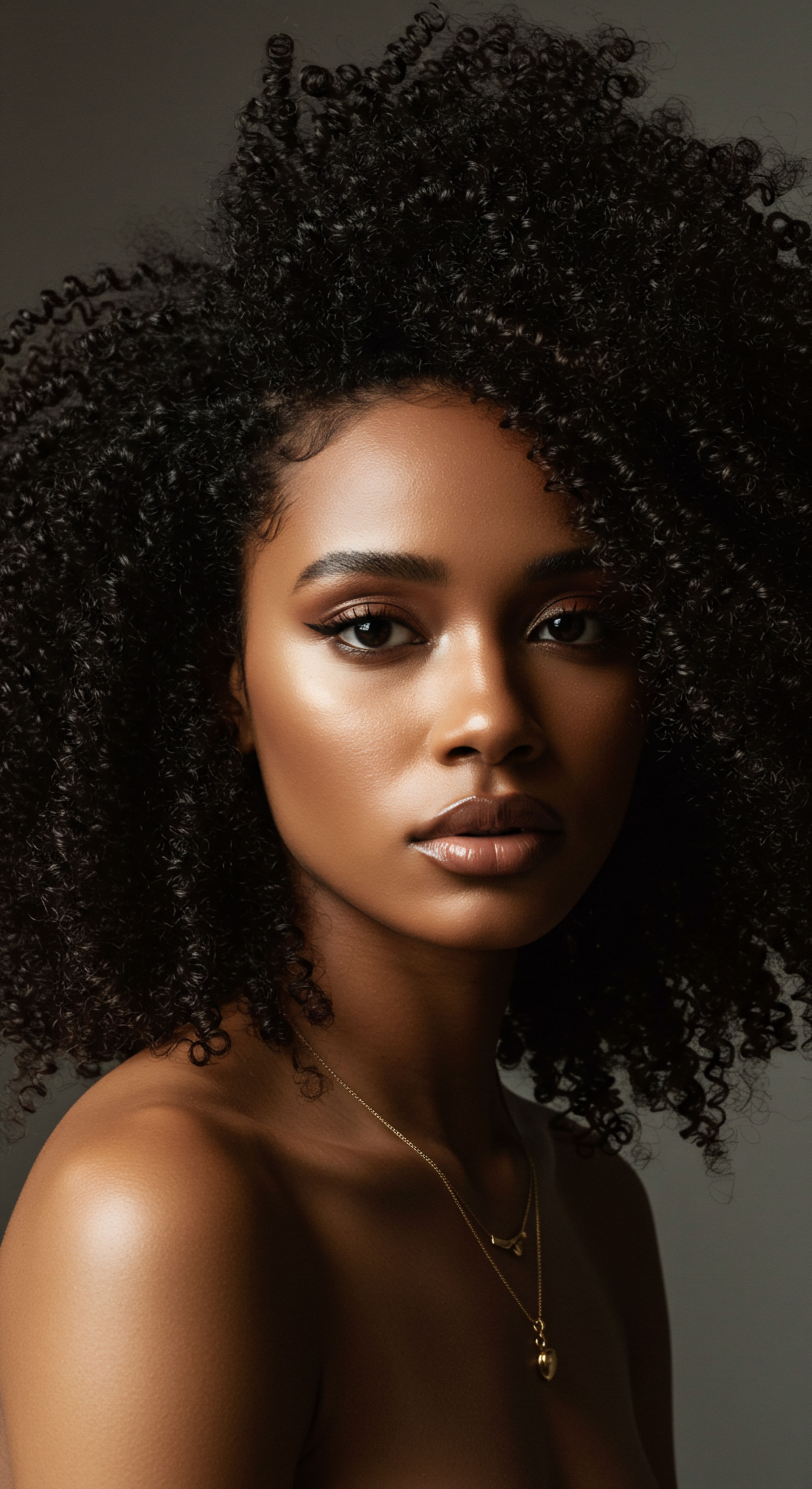
What Did Historical Laws Reveal About Hair Control?
The historical record bears witness to direct legal efforts to control Black hair, revealing the depth of societal discomfort. A poignant instance comes from 18th-century Louisiana with the implementation of the Tignon Laws. These ordinances, enacted in 1786 by the Spanish colonial governor Esteban Rodríguez Miró, compelled free Creole women of color in New Orleans to cover their hair with a tignon, a headscarf.
This measure arose from a perceived threat ❉ the elaborate and decorative hairstyles of these women, often adorned with jewels and feathers, were seen as attracting the attention of white men, challenging the established social order and racial distinctions. The law’s purpose was dual ❉ to mark these women as belonging to a lower social class, akin to enslaved women, and to prevent them from “enticing” white men.
This legislative control underscores how Black hair was viewed not merely as a personal choice but as a powerful symbol of identity and, when left in its natural state, a challenge to white supremacy. Even as these laws faded from direct enforcement by the early 1800s, the underlying sentiment of hair-based discrimination persisted, evolving into social pressures and unspoken rules that dictated appearance.
- Follicle Shape ❉ The unique elliptical or flattened shape of follicles in textured hair causes it to grow in spirals or coils, a structural difference that influences how light reflects and how oils distribute along the strand.
- Cuticle Layers ❉ Textured hair often presents with more open cuticle layers, which, while allowing for greater absorption of water, also permits moisture to escape more readily, leading to increased dryness.
- Oil Distribution ❉ Natural sebum, the scalp’s protective oil, struggles to travel down the spiraling path of coiled strands, leaving the ends particularly vulnerable to dryness and breakage.
| Era Pre-Colonial Africa |
| Dominant Societal View Symbol of status, identity, spirituality |
| Impact on Black Hair Celebrated, meticulously cared for, diverse styles |
| Era Transatlantic Slave Trade |
| Dominant Societal View "Unruly," "uncivilized" |
| Impact on Black Hair Forced shaving, covering, loss of traditional practices |
| Era Post-Slavery to Early 20th Century |
| Dominant Societal View "Unprofessional," "unmanageable" |
| Impact on Black Hair Pressure to straighten, chemical treatments widespread |
| Era The perception of Black hair shifted dramatically from cultural reverence to systematic denigration, reflecting changing power dynamics. |
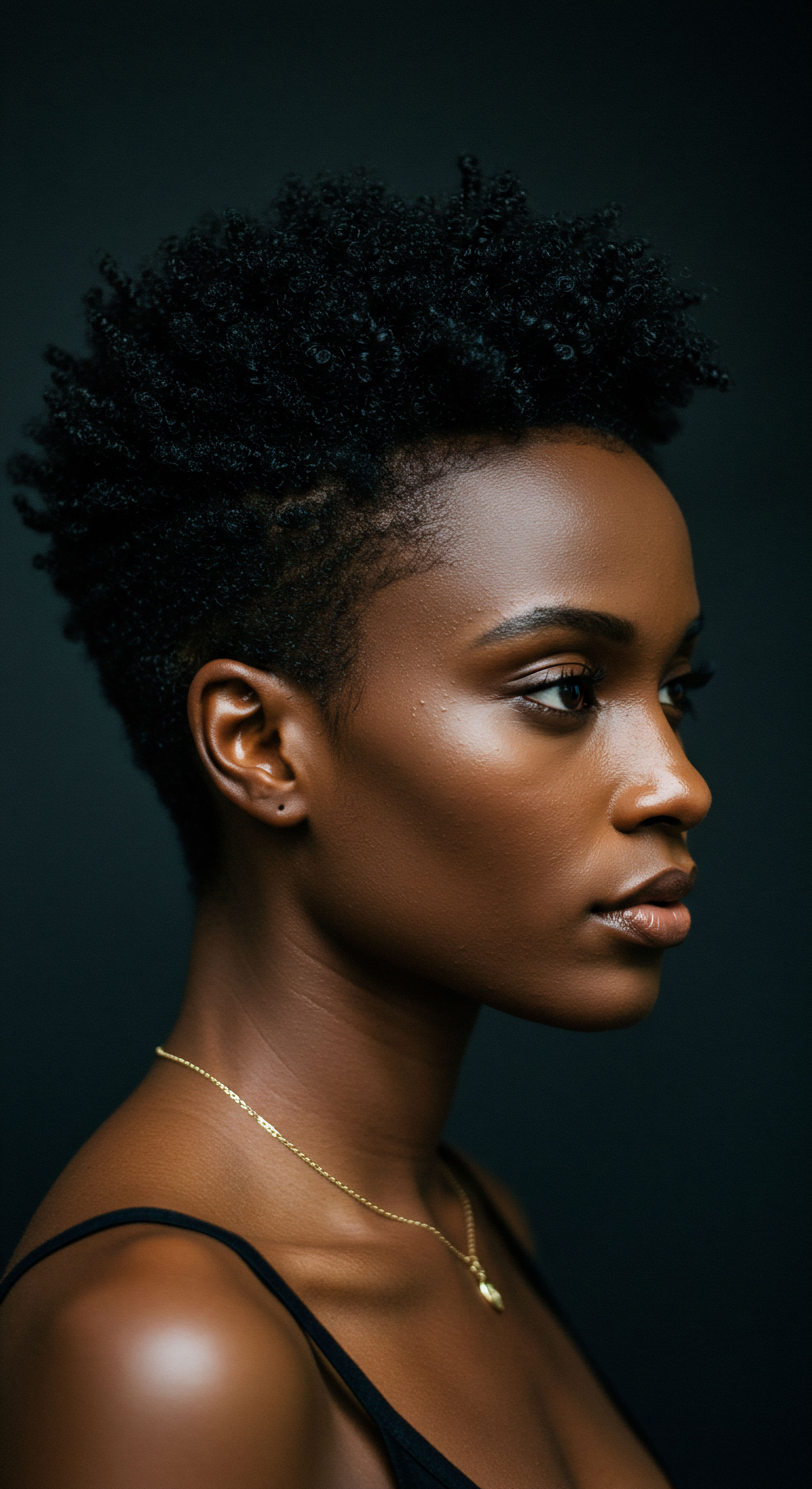
Ritual
The daily and periodic care of textured hair is more than a mere routine; it is a thoughtful practice, often a quiet act of self-preservation and connection to heritage. When we consider the techniques and tools that define this practice, we step into a space where understanding transforms into application, where scientific principles meet ancestral wisdom. This section moves from the foundational truths of hair to the tangible acts that shape its health and appearance, acknowledging that these practices have historically been scrutinized, judged, and often weaponized against those who wear them.
For generations, the choices Black individuals made about their hair were not simply about aesthetics; they were often strategic responses to a world that judged natural coils harshly. The pressure to conform to Eurocentric beauty standards led to widespread adoption of chemical relaxers and hot combs, tools designed to alter the inherent texture of Black hair to a straightened form. This was not always a choice born of preference, but frequently a perceived necessity for social and economic acceptance. In schools, in workplaces, and in public spaces, natural Black hair was frequently deemed “unprofessional” or “distracting,” leading to disciplinary actions or missed opportunities.
The daily rituals of textured hair care, from cleansing to styling, embody a continuous dialogue between personal expression and societal expectation.
Yet, within this landscape of external pressure, communities cultivated rich traditions of protective styling. These styles, such as braids, twists, and locs, served a dual purpose ❉ they guarded the hair from environmental damage and manipulation, promoting growth and health, while also acting as profound cultural statements. These styles carried historical significance, with roots in various African communities where they communicated social standing, marital status, and even served as maps for escape during enslavement. The resurgence of these styles, particularly during the Civil Rights and Black Power movements, became a visible declaration of pride and resistance, a reclaiming of identity against a backdrop of systemic devaluation.
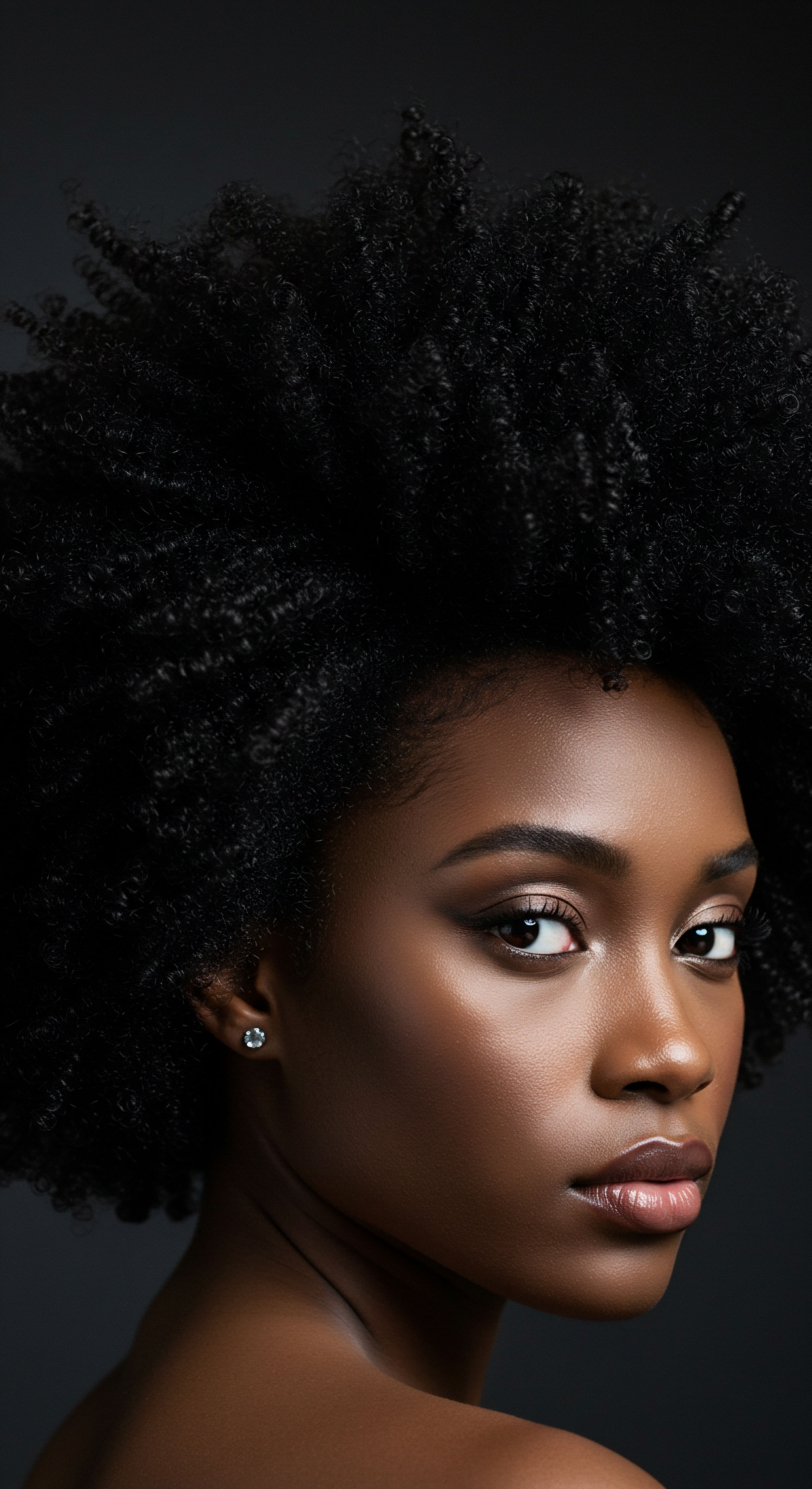
How Do Styling Choices Reflect Cultural Identity?
Styling choices for textured hair are deeply tied to cultural identity and community. For many, a particular style communicates a connection to heritage, a celebration of natural beauty, and a statement of self-acceptance. The act of wearing one’s hair in its natural state or in protective styles such as locs or cornrows became, for many, an act of defiance against a beauty ideal that marginalized their inherent physical characteristics. This shift was not without its challenges; legal battles arose as individuals faced discrimination for wearing these styles in professional or academic settings.
For instance, in the 1981 case of Rogers V. American Airlines, a Black flight attendant sued her employer for demanding she not wear her hair in cornrows. The court sided with the airline, reasoning that braids were an “easily changed characteristic” and thus not protected under anti-discrimination laws. This ruling highlighted a critical gap in legal protections and underscored the arbitrary nature of beauty standards that often privileged Eurocentric aesthetics.
The persistent struggle for acceptance of natural styles underscores the ongoing negotiation between individual expression and the external pressures to conform. It speaks to the resilience of cultural practices that have survived centuries of attempts to erase them.
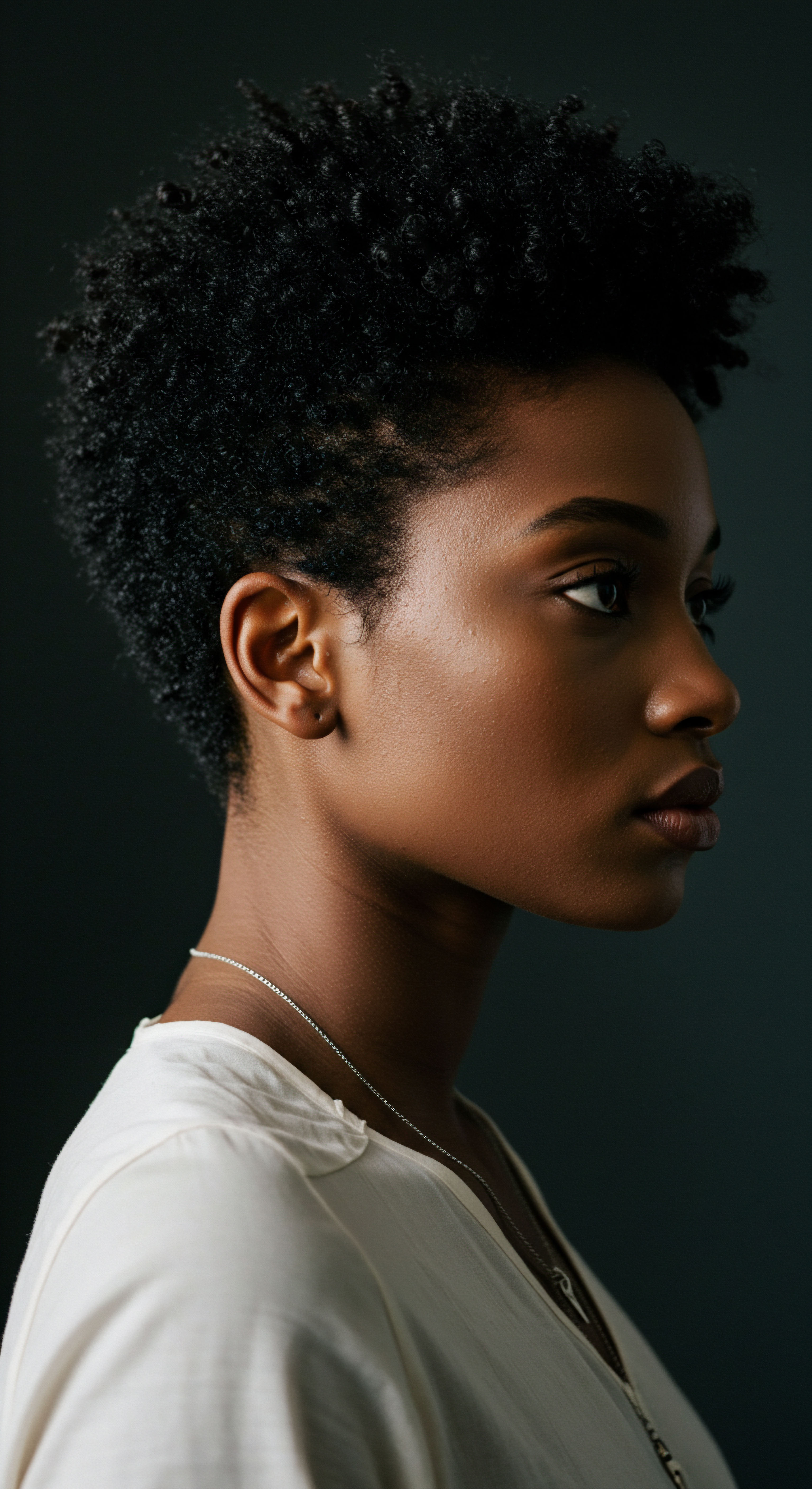
Why are Protective Styles Vital for Hair Health?
Protective styles are more than just aesthetic choices; they are a cornerstone of healthy textured hair care. By tucking away delicate ends and minimizing daily manipulation, these styles significantly reduce breakage and promote length retention. The coiled structure of textured hair, while beautiful, can be prone to tangling and dryness, making it vulnerable to damage from constant styling.
Properly executed protective styles allow the hair to rest, shielding it from harsh environmental elements like wind, sun, and cold, as well as from the friction of clothing. They help to maintain moisture levels by reducing evaporation, creating a more stable environment for the hair shaft. This practice is particularly vital for those seeking to grow their hair longer or recover from previous damage caused by excessive heat or chemical treatments. The choice to wear a protective style is often a conscious decision to prioritize hair health, aligning personal care with ancestral wisdom.
- Braids ❉ Offer a foundational protective option, ranging from cornrows that lie flat against the scalp to individual box braids, all minimizing daily handling.
- Twists ❉ Similar to braids, twists reduce tangling and tension, with two strands wrapped around each other, often leading to defined curl patterns when removed.
- Locs ❉ A permanent protective style that allows hair to matt into ropes, representing a deep cultural connection and requiring specialized care to maintain health and cleanliness.
| Technique Protective Styles (Braids, Twists, Locs) |
| Primary Purpose Minimize manipulation, retain length, cultural expression |
| Historical Context Ancient African tradition, resistance, identity affirmation |
| Technique Heat Straightening (Pressing, Flat Ironing) |
| Primary Purpose Alter texture for straight appearance |
| Historical Context Post-slavery conformity to Eurocentric standards |
| Technique Chemical Relaxing |
| Primary Purpose Permanently alter texture for straight appearance |
| Historical Context Mid-20th century, societal pressure for "manageable" hair |
| Technique The evolution of Black hair styling reflects a continuous negotiation between cultural heritage and societal pressures. |

Relay
To truly comprehend the deep-seated prejudice against natural Black hairstyles, we must move beyond surface observations and delve into the intricate interplay of biological, psychological, social, and cultural factors. It is a complex landscape where historical oppression casts long shadows, shaping perceptions and impacting lived experiences in profound ways. This section aims to unravel these layers, connecting the threads of past and present to illuminate the enduring societal biases.
The origins of this prejudice are not accidental; they are rooted in centuries of colonialism and slavery that systematically elevated European physical characteristics as the standard of beauty and civility. This created a racialized beauty ideal where tightly coiled or curled hair was deemed inferior, unprofessional, and even ugly, particularly when contrasted with the straight hair often associated with white women. This imposed aesthetic permeated every aspect of society, from employment opportunities to educational environments, creating a pervasive system of discrimination.
The enduring prejudice against natural Black hairstyles stems from a complex historical interplay of racialized beauty standards, economic gatekeeping, and psychological conditioning.

What is the Economic Burden of Hair Discrimination?
The economic consequences of hair discrimination are substantial and often overlooked. Beyond the emotional toll, individuals with natural Black hairstyles face tangible financial disadvantages. A 2020 study published in Social Psychological and Personality Science, co-authored by Ashleigh Shelby Rosette and Christy Zhou Koval, provides empirical evidence of this bias. Their research indicated that Black Women with Natural Hairstyles Were Perceived as Less Professional and Less Competent, and Were Significantly Less Likely to Be Recommended for Job Interviews Compared to Black Women with Straightened Hair, and White Women with Either Curly or Straight Hair. This disadvantage was particularly pronounced in industries with stringent dress norms, such as financial services and management consulting.
This translates into real-world economic penalties, including lost job opportunities, reduced career progression, and the implicit pressure to spend time and money on straightening processes that can be both costly (ranging from $38 to $435 per session for permanent straightening) and damaging to hair health. The constant need to alter one’s hair to conform to Eurocentric standards places an unfair financial and emotional burden on Black individuals, a burden not typically borne by their white counterparts. A broader 2024 study, examining the economic and social costs of appearance-based discrimination in the United States, estimated that 5 million people were affected by natural hair discrimination in 2019, contributing to a significant, though not yet fully quantified, economic cost.

How Do Societal Standards Impact Mental Well-Being?
The constant invalidation of natural Black hair deeply affects mental well-being. The persistent exposure to negative biases and microaggressions linked to hair can lead to psychological distress, diminished self-esteem, and even physical health issues. When schools or workplaces enforce grooming policies that penalize natural hairstyles like locs, braids, or Afros, they send a clear message ❉ parts of one’s cultural identity are unacceptable. This can result in disciplinary actions, social ostracization, and significant stress.
The psychological burden extends to the dilemma of choosing between authenticity and perceived professional acceptance. Many Black women report feeling compelled to straighten their hair for job interviews or new employment situations, a practice that can cause physical damage to their hair and scalp over time, leading to conditions such as traction alopecia. The Association of Black Psychologists has even termed hair discrimination an “esthetic trauma,” underscoring its severe mental health repercussions. The ongoing societal judgment creates a cycle where hair, a deeply personal aspect of self, becomes a source of anxiety and a battleground for identity.
- Employment Barriers ❉ Research shows Black women with natural hair face biases in hiring and promotion, impacting their professional trajectory.
- Educational Penalties ❉ Students with natural hairstyles often face disciplinary actions, including suspensions, due to discriminatory school policies.
- Health Implications ❉ The pressure to chemically straighten hair for conformity can lead to scalp damage, hair loss, and even links to certain health conditions.
| Impact Area Self-Perception |
| Manifestation Internalized negative beauty standards |
| Consequence Lowered self-esteem, body dissatisfaction |
| Impact Area Social Dynamics |
| Manifestation Exclusion, microaggressions, bullying |
| Consequence Social ostracization, anxiety, stress |
| Impact Area Cultural Identity |
| Manifestation Pressure to suppress cultural expression |
| Consequence Loss of connection to heritage, identity conflict |
| Impact Area Hair prejudice extends beyond aesthetics, profoundly influencing mental health, social acceptance, and cultural affirmation. |
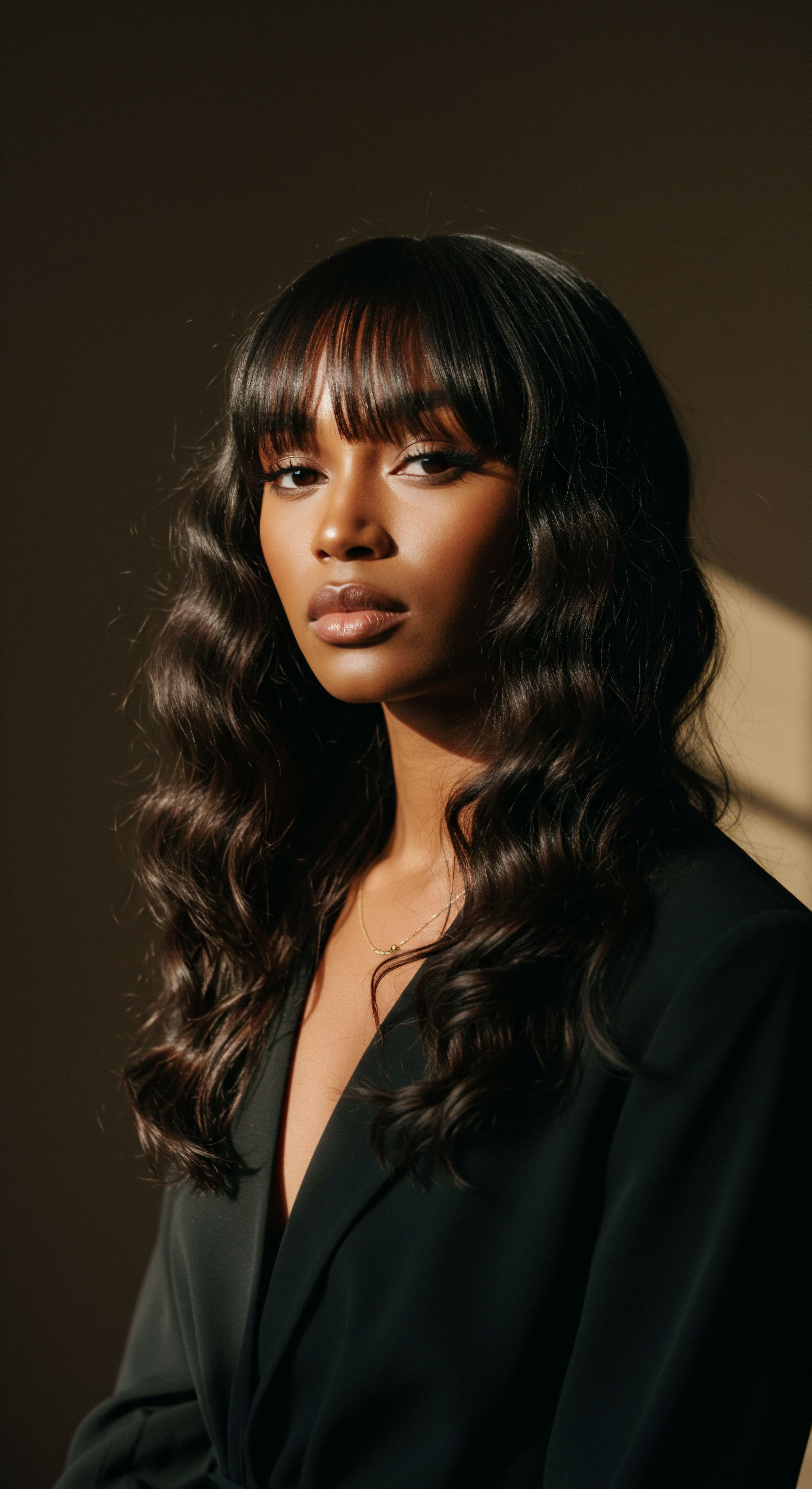
Reflection
As we consider the historical landscape of prejudice against natural Black hairstyles, a clearer picture emerges, one that extends beyond mere aesthetics to touch upon deep societal constructs of race, power, and belonging. The journey from celebrated cultural marker to object of derision, and then to a symbol of contemporary resistance, reveals the profound resilience inherent in Black identity. This ongoing conversation about hair is a mirror, reflecting not only the individual’s spirit but also the broader societal journey toward genuine acceptance. The question remains ❉ how might our collective understanding continue to shift, allowing for a future where every texture is simply seen as beautiful, without the weight of historical judgment?
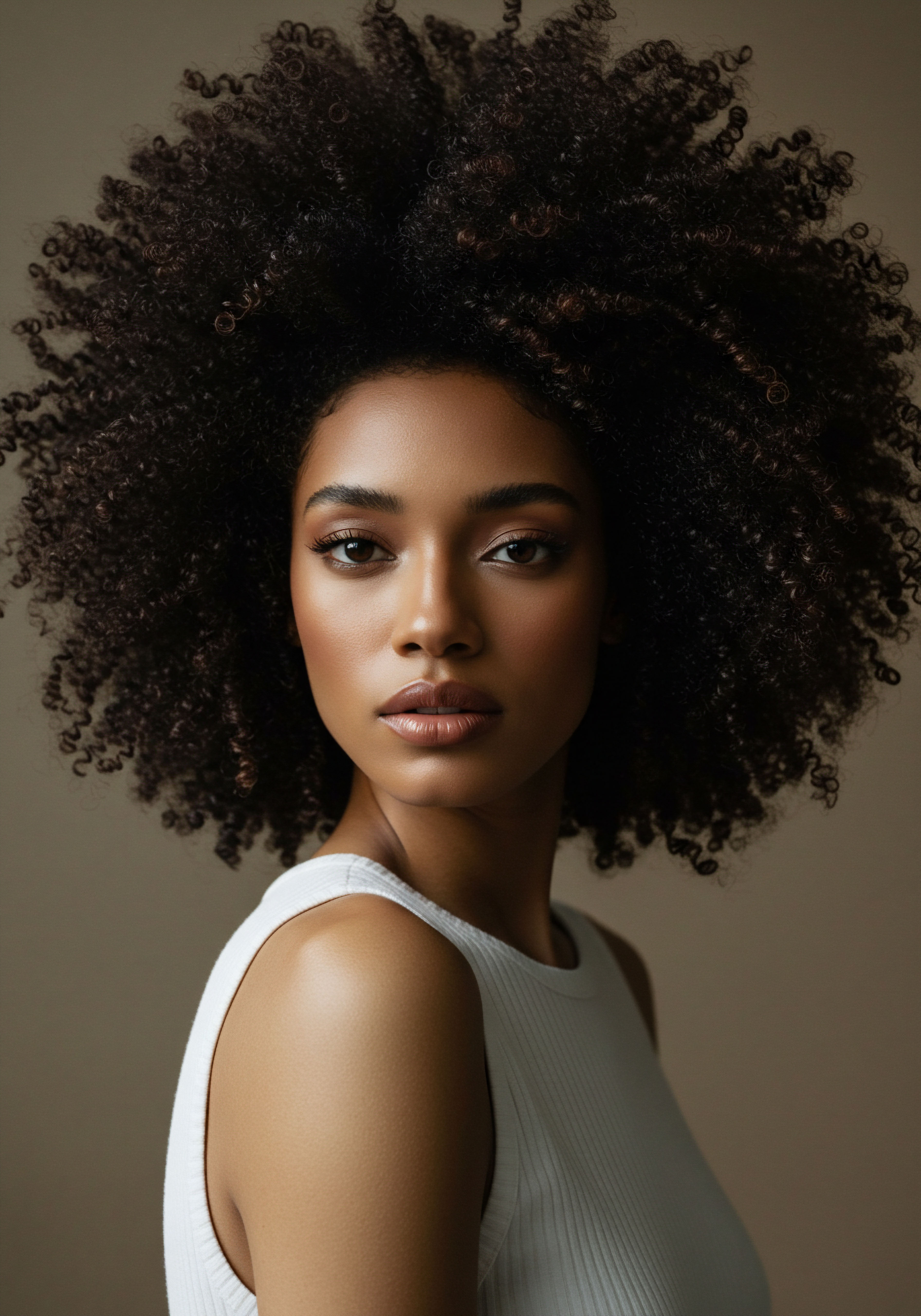
References
- Byrd, Ayana D. and Tharps, Lori I. 2001. Hair Story ❉ Untangling the Roots of Black Hair in America. St. Martin’s Press.
- Dabiri, Emma. 2020. Twisted ❉ The Tangled History of Black Hair Culture. Harper Perennial.
- Frevert, T. K. & Walker, L. S. 2014. Physical attractiveness and social status. Sociology Compass, 8(3), 313–323.
- Jacobs-Huey, Lanita. 2006. From the Kitchen to the Parlor ❉ Language and Becoming in African American Women’s Hair Care. Oxford University Press.
- Johnson, K. A. & Bankhead, T. 2014. Hair It Is ❉ Examining the Experiences of Black Women with Natural Hair. The Journal of Black Psychology, 40(1), 87-104.
- Menon, Alka. 2023. Refashioning Race ❉ How Global Cosmetic Surgery Crafts New Beauty Standards. University of California Press.
- Rosette, Ashleigh Shelby, and Koval, Christy Zhou. 2020. The Natural Hair Bias in Job Recruitment. Social Psychological and Personality Science.
- Rooks, Noliwe. 1996. Hair Raising ❉ Beauty, Culture, and African American Women. Rutgers University Press.
- Tate, Shirley Anne. 2007. Black Women ❉ Race, Gender and Identity. Routledge.